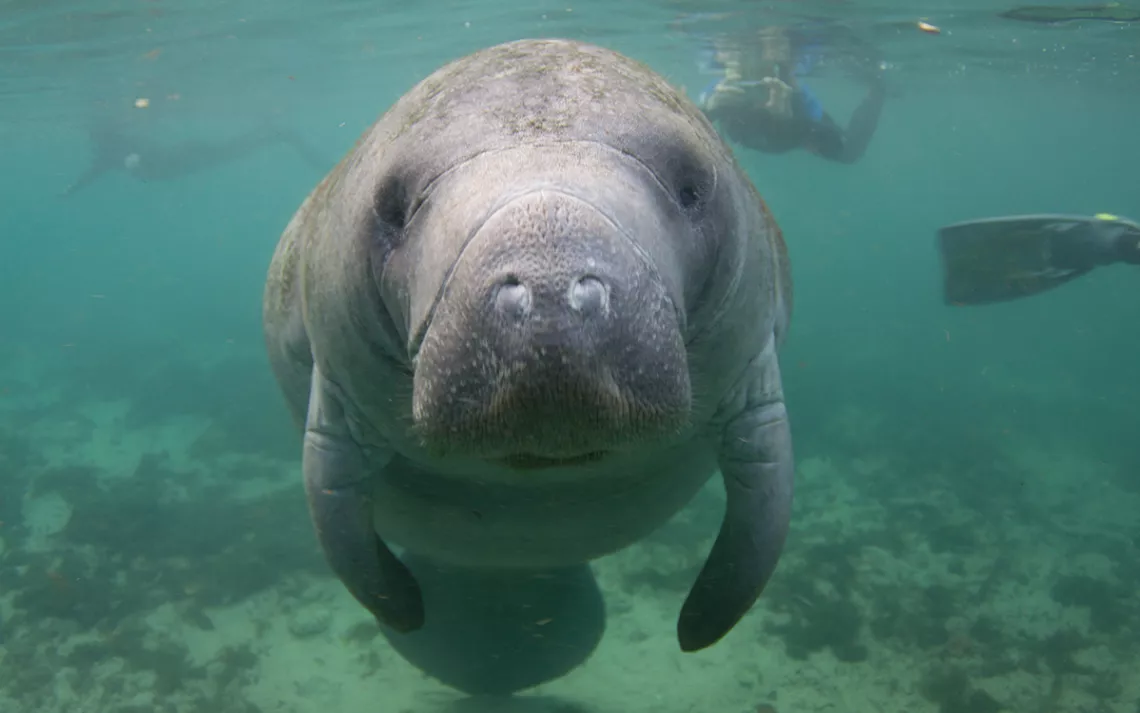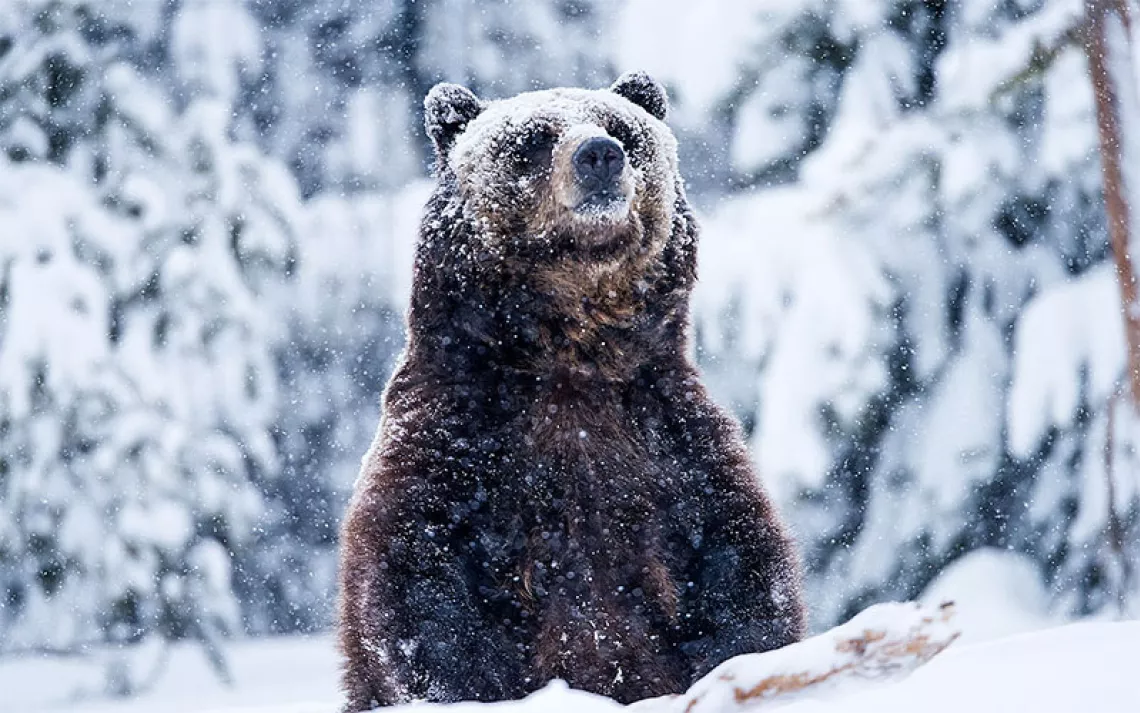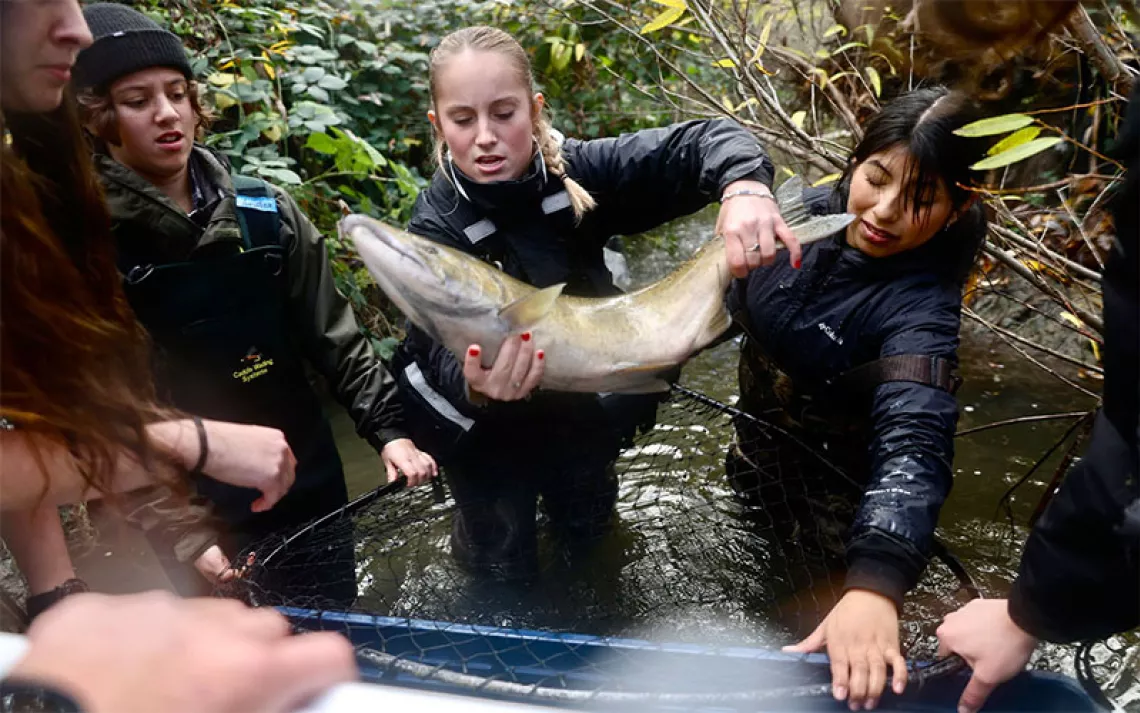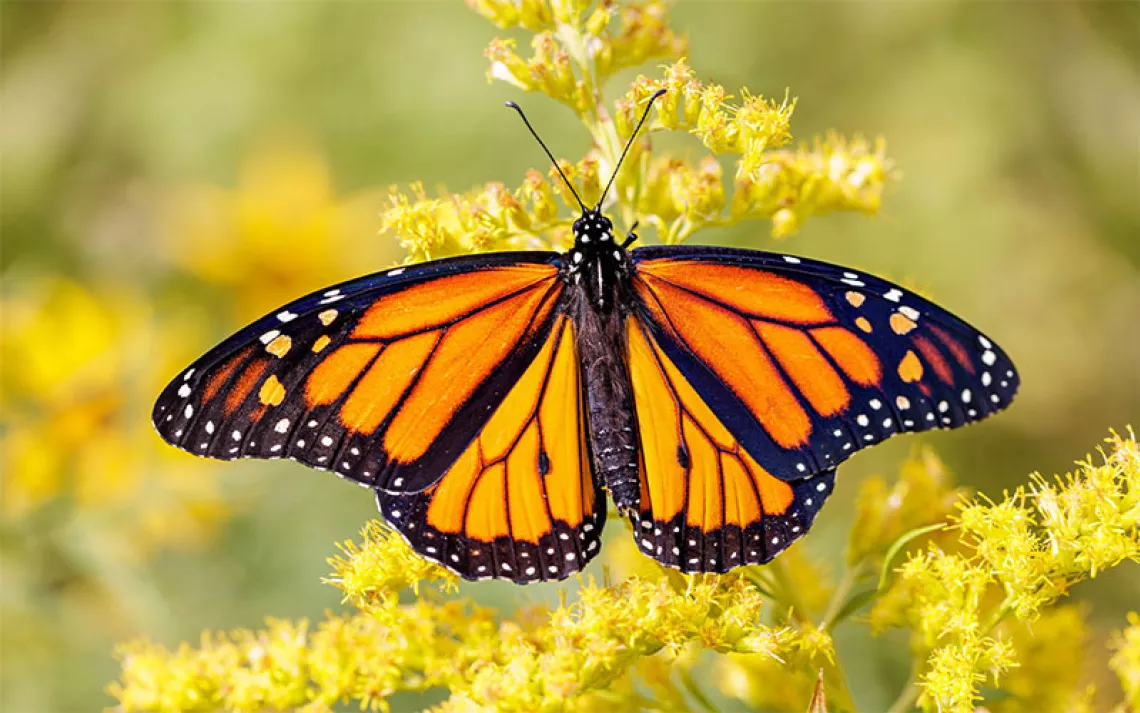A Tale of Two Manatee-Conservation Experiences
Could Crystal River, Florida, be a model for saving the threatened marine mammal?

Photo by iStock/pclark2
It started with one man and his rake. In 2009, Art Jones, a resident of Crystal River, Florida, became concerned about the decomposing algae choking the seagrass in nearby Kings Bay. Seagrass is important to a range of aquatic species, including the beloved manatees that inhabit Kings Bay on Florida’s western coast, about 80 miles north of the city of Tampa Bay. No one was doing anything about the algae, so one day Jones jumped in the river with his garden rake and started to scrape the riverbed to clear away the algae. Soon, friends and neighbors joined in. The project eventually became the Kings Bay Restoration Project, which by 2015 had raised $1.6 million and has now restored 55 acres of algae-covered waters into lush eelgrass.
The recovery of the bay’s eelgrass is one of the reasons why Florida’s west coast manatees are thriving. In April, the US Fish and Wildlife Service’s Crystal River National Wildlife Refuge released a report that found the highest number of manatees ever recorded in Citrus County—1,333 manatees—for the manatee season running from November 15, 2021, to March 31, 2022.
That encouraging news stands in stark contrast to the plight of manatees on Florida’s east coast, where the species’ numbers are plummeting, due in part to the loss of seagrass. The manatees of the Indian River Lagoon are dying in alarming numbers in what biologists call “an unusual mortality event.” Since last year, at least 1,101 manatees have died in and around Indian River Lagoon, according to a report by the Florida Fish and Wildlife Conservation Commission. They have primarily died of starvation due to the disappearance of seagrass.
The situation has gotten so bad for the Indian River Lagoon manatees that last winter officials with the Florida Fish and Wildlife Conservation Commission had to launch an emergency feeding. To keep the manatees alive, commission staffers fed the east coast manatees some 55 million tons of lettuce—a lifeline funded by donations from more than a thousand people.
The well-being of the Kings Bay manatees even as their cousins in Indian River Lagoon suffer may offer valuable lessons for other wildlife conservation campaigns involving a range of species.
Community efforts were the catalyst for restoring the waterways in Crystal River. It began as a simple idea—remove the invasive Lyngbya algae from the waters. “It was filthy dirty, the Lyngbya algae so thick it was floating on the surface, and it looked and smelled like rotting sewage,” Jones remembered. As friends and neighbors saw his efforts incrementally improving the water quality, they joined in the efforts. Eventually, he formed One Rake at a Time, a nonprofit organization that has seen thousands of volunteers join in the effort over the years.
As restoration efforts ramped up, Jones secured a grant from the county and teamed up with Save Crystal River, a local organization formed in 2012. The two organizations received counsel from experts such as Patrick Rose, an aquatic biologist and the executive director of Save the Manatee Club. They later modeled their restoration efforts after a successful aquatic restoration project by Sea & Shoreline in Clearwater, about 90 miles south of Crystal River.
Eventually, the groups received a state grant for $1.6 million to clean 3.4 acres of bay and river bottoms using mechanical algae-removal methods, plant native seagrass, and maintain the area for one year. The Kings Bay Restoration Project was born. Since its inception, the project has cleared away much of the algae once choking the aquatic ecosystem, leading to the opening of some 750 new underwater spring vents, which are the source of the area’s strikingly clear waters. The natural food supplies for the manatees, crabs, amphipods, and other species have returned, leading to a wildlife population rebound.
The Crystal River success story then served as a model for the Homosassa River Restoration Project. Also working with Sea & Shoreline, Homosassa—15 miles south of Kings Bay and Crystal River—has planted 74,495 units of eelgrass and restored almost 14 acres of the spring. Art Jones is now taking the underwater raking over to Rainbow River, about 18 miles northeast of Crystal River, in the hopes of achieving the same success there.
Now, Jones is hoping that the strategies that have succeeded on Florida’s west coast can be applied to help the starving manatees on its east coast. “I would love to see the same thing happen over on Indian River, but I don’t know if the state’s willing to fund that large of a project over there yet—that’s a much bigger lagoon,” he said.
But biologist Patrick Rose cautions that the solution wouldn’t be as easy as just modeling Crystal River’s success. “There’s almost no comparison between Kings Bay–Crystal River versus what’s going on in the Indian River Lagoon,” Rose explained. The Indian River Lagoon extends 156 miles along Florida’s east-central coast. In contrast, Kings Bay–Crystal River is a mere seven miles long. “Five to six billion dollars would be needed for the restoration versus the tens of millions of dollars being spent right now,” Rose said. Also, on the east coast, the manatees congregate in high numbers in the artificially warm waters of a Cape Canaveral power plant; on the west coast, at Kings Bay and Crystal River, the manatees come for the warm natural springs.
What is certain, Rose said, is that the unusual mortality event could’ve been avoided. “Decades of continuing pollution have resulted in declining water quality, feeding major algae blooms that shaded out and killed the seagrass,” he said. “We saw this coming. We warned the agencies, petitioned them, and made efforts to raise the concern and awareness. It’s going to be decades before we can get it fixed.”
Chuck Underwood, a spokesperson for US Fish and Wildlife Service, also sought to downplay any comparisons between the two ecosystems. “Attempting to draw any comparisons between the unfortunate events on the east coast with the Crystal River area would require substantial speculation versus fact-based responses,” he wrote in an email.
While there are significant differences in the size of the two ecosystems and the unique challenges they each face, it’s clear that the west coast manatees are thriving today because of several key factors, including the passion and vision of community scientists, collaboration between government agencies and local advocates, and, above all, a community of humans who were driven by a deep love for their non-human neighbors.
“We have the healthiest herd of manatees here in Kings Bay,” Jones said. “They love us, and we love them. When the manatees arrive, they’ve got food and can relax.” He adds, “Sometimes I swear, you see a manatee smiling and thinking, ‘Hi, friends! Thanks for all the eelgrass you planted for us.’”
 The Magazine of The Sierra Club
The Magazine of The Sierra Club



